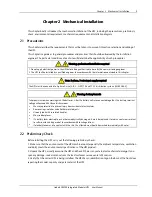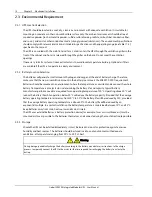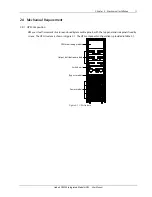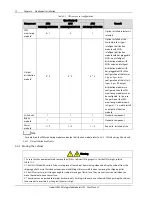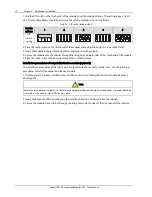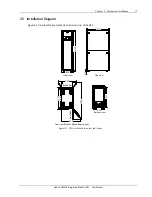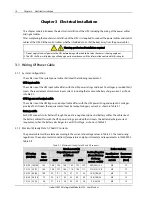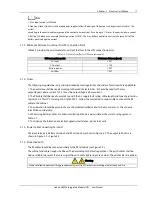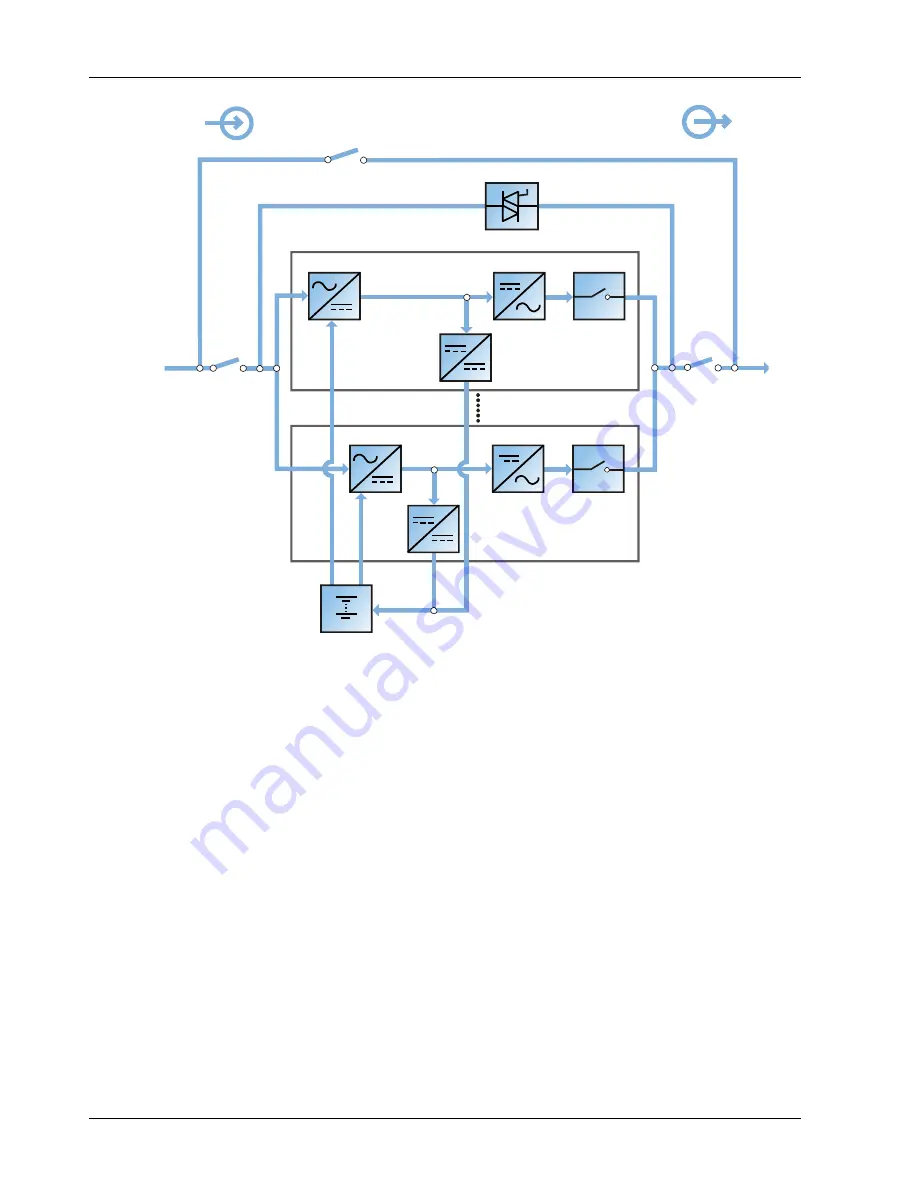
2 Chapter 1 Overview
Liebert APM 90 Integrated Modular UPS User Manual
Rectifier
Rectifier
Mains
input
Input switch
Maintenance switch
Input
Battery
Charger
UPS
output
Inverter
Charger
Inverter
Automatic
inverter switch
Output
Output switch
Maintenance bypass
Automatic
inverter switch
Input
Output
Maintenance switch
Static switch
Maintenance bypass
Rectifier
Inverter
Automatic
inverter switch
Output switch
UPS
output
Charger
Mains
input
Input switch
5 power modules
Rectifier
Inverter
Charger
Automatic
inverter switch
Battery
Figure 1-1
Block diagram for operating principle of single module
The UPS provides independent battery charger, and uses advanced temperature compensation technology to
prolong the battery life. The inverter uses high power IGBT switching and advanced SVPWM design to
reconvert the DC busbar voltage back into an AC voltage waveform.
During normal operation, both the rectifier and inverter sections are active and provide regulated load power
whilst simultaneously charging the battery. In the event of a mains power failure, the rectifier becomes
inoperative and the inverter is powered solely from the battery. Critical load power is maintained under these
conditions until the battery is fully discharged, whereupon the UPS shuts down. The end of battery discharge
is assumed when the battery voltage falls below a preset value.
The period for which the load can be maintained following a mains power failure is known as the system's
autonomy time and is dependent upon both the battery A/Hr capacity and the applied percentage load.
1.2.2
Bypass
The static switch and automatic inverter switch shown in Figure 1-1 contain an electronically controlled
switching circuit that enables the load to be connected to either the inverter output or to a bypass power
source through the static bypass line. During normal system operation, the load is connected to the inverters;
but in the event of a UPS overload or inverter failure, the load is automatically transferred to the static bypass
line.
During normal operating conditions, the inverter output and bypass supply must be fully synchronized so as to
achieve a clean (no-break) load transfer between the inverter output and static bypass line. The
synchronization between the inverter output and static bypass is achieved through the inverter control





















